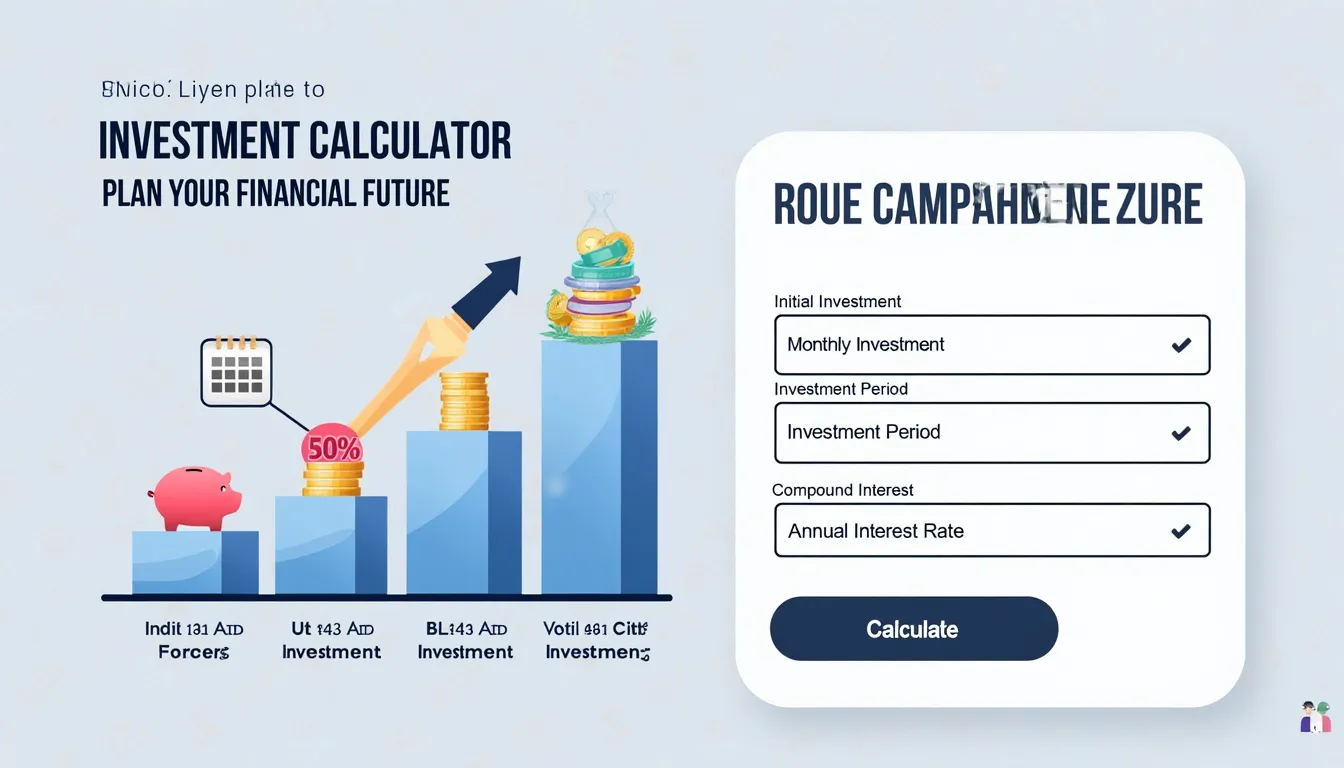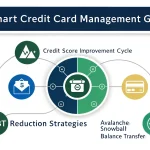Investment Calculator
Is this tool helpful?
How to use the tool
- Initial investment – type your opening lump-sum. Example A: $20 000; Example B: $5 500.
- Monthly contribution – add the amount you will deposit every month. Example A: $300; Example B: $850.
- Investment period (years) – set the time horizon. Example A: 18 years; Example B: 25 years.
- Annual interest rate % – enter the expected average return. Example A: 6.8 %; Example B: 8.2 %.
- Press “Calculate” – the future value appears instantly and updates whenever you change any field.
Formula used
The calculator combines a single deposit (P) and equal monthly deposits (PMT) with monthly compounding:
$$ FV = P(1+r)^{n} + PMT \left[ rac{(1+r)^{n}-1}{r}\right] $$- r = annual rate ÷ 12
- n = years × 12
Example calculations
- Balanced growth
P = $20 000, PMT = $300, Years = 18, Rate = 6.8 %
FV ≈ $194 420.00 - Aggressive growth
P = $5 000, PMT = $800, Years = 25, Rate = 8.2 %
FV ≈ $824 140.00
Quick-Facts
- The S&P 500’s long-term average annual return is about 10 % (S&P Dow Jones Indices, 2023).
- Average U.S. savings-account rate is 0.47 % (FDIC Weekly Rate Cap, 2024).
- 2024 IRA contribution limit is $6 500 ($7 500 if 50+) (IRS Notice 2023-75).
- Rule of 72 estimates doubling time: 72 ÷ rate (FINRA Investor Education, 2022).
FAQ
What does the calculator measure?
The tool projects the future value of combined lump-sum and monthly deposits using monthly compounding (Investopedia, “Future Value”).
How does compound interest work?
Interest is added to principal each period, and new interest accrues on that larger balance (Federal Reserve Education, 2023).
How accurate are the results?
The math is exact, yet real returns vary with fees, taxes, and market changes (SEC Investor Bulletin, 2022).
What rate should I enter?
Use historical averages for your asset class; U.S. large-cap stocks averaged 10 % annually (Morningstar Market Report, 2023).
Can I factor in inflation?
Subtract expected inflation—currently 3.2 %—from your nominal rate to get a real return (BLS CPI Summary, 2024).
How often should I revisit my plan?
Review inputs at least yearly or after major life events (CFP Board Planning Guide, 2023).
What is the Rule of 72?
Divide 72 by your annual rate to estimate years needed to double your money (FINRA, 2022).
Does duration or contribution matter more?
Time amplifies compounding; extending by ten years can outweigh a modest deposit increase (JP Morgan Asset Management, 2023).
Important Disclaimer
The calculations, results, and content provided by our tools are not guaranteed to be accurate, complete, or reliable. Users are responsible for verifying and interpreting the results. Our content and tools may contain errors, biases, or inconsistencies. Do not enter personal data, sensitive information, or personally identifiable information in our web forms or tools. Such data entry violates our terms of service and may result in unauthorized disclosure to third parties. We reserve the right to save inputs and outputs from our tools for the purposes of error debugging, bias identification, and performance improvement. External companies providing AI models used in our tools may also save and process data in accordance with their own policies. By using our tools, you consent to this data collection and processing. We reserve the right to limit the usage of our tools based on current usability factors.







